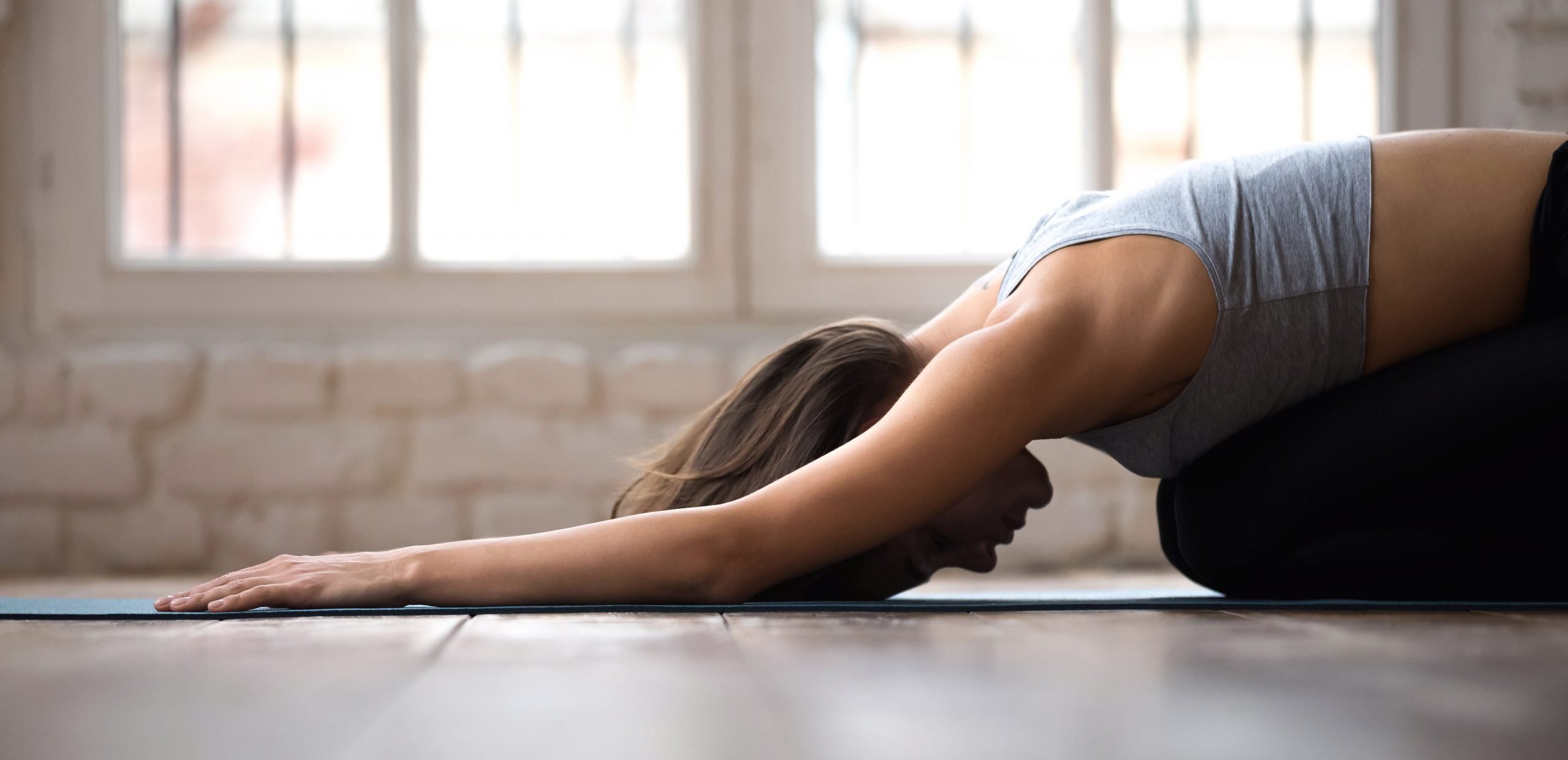If you are experiencing neck and back pain the chances are very good that Yoga can come to the rescue. Simple exercises can give immediate relief, and daily practice can prevent its return. Much of the neck and back pain we experience is the result of bad posture, repetitive movement injury, or trauma.
Another factor could be stress, which has an overall effect of tightening muscles, exaggerating any misalignment of the spine. Many people benefit greatly from therapeutic yoga when recovering from trauma, but for some injuries to the spinal cord are made worse by certain movements. When in doubt, consult a specialist to be sure yoga is right for you.
How you stand, sit and move about is critical to your spinal health. The natural curves of the back should be maintained- your posture is an important factor contributing to the health of your back and neck. Too much or too little curve in the upper back (thoracic spine) may cause neck and upper back pain. Too much or too little arch in the lower back (Lumbar spine) may cause lower back pain. But an imbalance in the curvature of one part of the spine alters the rest of the spine, and in fact the whole body, and so poor posture can also cause headaches or foot pain!
The correct practice of yoga improves posture, promotes healing of injuries and reduces stress and so reduces or eliminates pain. Yoga does this by increasing strength and flexibility to bring balance to the spine- when we have proper posture the body is efficient and at ease, with poor posture muscles are over stretched, tense, or tired from holding up the body improperly. Every body is a little different though, the length of the spine in relation to the limbs varies, bodies can be dense or soft, muscular, thin, and the list goes on. Be sure to bring awareness to your yoga practice and notice what works for you. Also don’t compare yourself to others and start from where you are with appreciation for your body’s strengths.
Yoga also helps the body to heal by boosting the immune system- it promotes increased blood flow, better lymph drainage and muscle relaxation. Perhaps most importantly it teaches us to tune into our bodies, becoming aware of when we are stressing our bodies and becoming vulnerable to injury. Proper yoga practice connects the mind and body through attention to the breath, and this reduces stress and promotes self-care. After practicing yoga you will be more likely to notice the effects of over-work and other lifestyle problems because you are listening to yourself.
If you have repetitive movement injury you need to determine the cause and remove it or modify your posture. An experienced yoga teacher may be of great assistance in this. If you have spinal disc damage you should consult your health practitioner and an experienced yoga teacher before proceeding.
Some safe and effective exercises
Neck Stretches – Repeat each exercise 3-4 times
- Gently drop the chin, and lift the chin
- Look right to left
- Relaxing shoulders, drop ear to shoulder, alternating each side
- Roll head in half circles from shoulder to shoulder- it is not recommended to drop head back as this is stressful to your spine.
Shoulders and Upper Back (to open front of chest)
- Roll shoulder back and forth by rotating your arms (turn thumbs back and then forward, feeling this all the way to your neck). Lift your chest and face up as you role shoulders back, drop you chin as you roll shoulders forward. Feel the muscles between the shoulder blades work, feel the chest stretch as you open it.
- Kneel on the floor, clasp your hands behind your back, breath in as you roll your shoulders back and lift your straitened arms behind you. Exhale as you lean forward and touch your forehead to the ground. Breathe in as you straiten your spine to upright, rolling your shoulders back, opening your chest and lifting you face. Relax as you exhale. May be done sitting in a chair if kneeling is uncomfortable. Repeat 6-12 times. Avoid squeezing the shoulder blades together tightly – keep the space between the shoulder blades wide and the back of the heart open.
Strengthen Upper Back
- Come into a table position with your hands under your shoulders and your knees under your hips. Drop your spine squeezing the muscles between your shoulder blades. Do not bend your arms or tilt your pelvis. Repeat 3 sets of 10. As you strengthen these muscles inch your knees back. You may eventually come into a modified push-up position with your knees on the floor. Be careful not to arch your back as this will cause lower back pain!
Twist in a Chair
- Choose a flat bottomed strait back chair without arms. Sit sideways on the chair, and keeping the feet strait out and the knees over the feet, hold onto the back of the chair gently twisting towards the back of the chair. Repeat on the other side.
Forward Bend in a Chair
- Sit in a chair and fold your arms on a desk with your head resting on your arms to one side. Change head position to the other side.
- Or, Fold forward in your chair and rest your spine along your knees. Breathe and relax.
Attending a regular yoga class with an experienced and qualified teacher will insure that you are choosing the best exercises for you and doing them correctly. You will find that improving your posture and movement habits not only reduces or eliminates pain, but improves your mood and mental clarity. You will learn ways to manage stress which help you to meet challenges with energy and unwind when its time to relax.
Copyright © Inspired Life Health Centre Inc.
Reproduction of this document or any portion thereof without prior written consent is prohibited.




